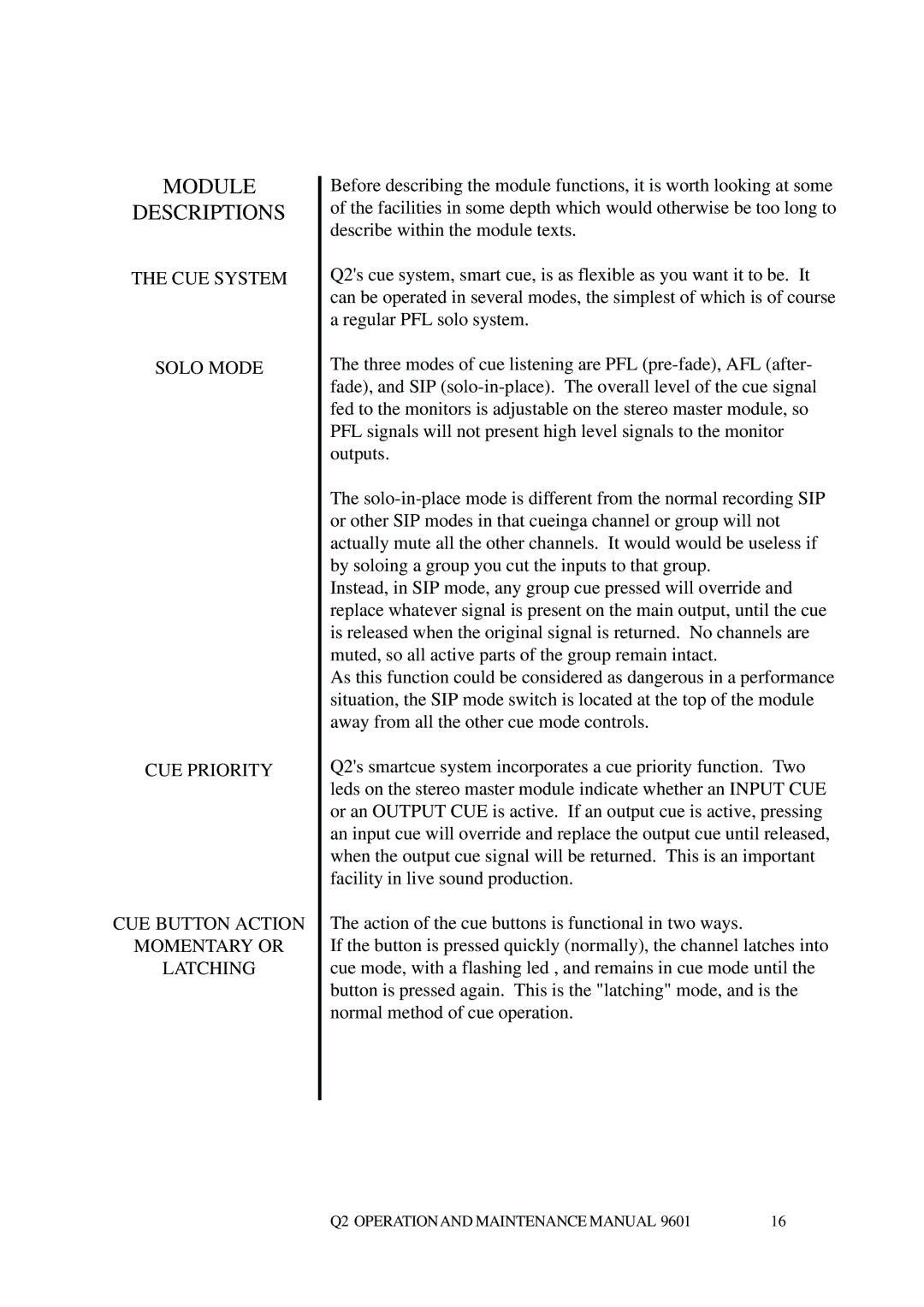MODULE
DESCRIPTIONS
THE CUE SYSTEM
SOLO MODE
CUE PRIORITY
CUE BUTTON ACTION
MOMENTARY OR
LATCHING
Before describing the module functions, it is worth looking at some of the facilities in some depth which would otherwise be too long to describe within the module texts.
Q2's cue system, smart cue, is as flexible as you want it to be. It can be operated in several modes, the simplest of which is of course a regular PFL solo system.
The three modes of cue listening are PFL
The
Instead, in SIP mode, any group cue pressed will override and replace whatever signal is present on the main output, until the cue is released when the original signal is returned. No channels are muted, so all active parts of the group remain intact.
As this function could be considered as dangerous in a performance situation, the SIP mode switch is located at the top of the module away from all the other cue mode controls.
Q2's smartcue system incorporates a cue priority function. Two leds on the stereo master module indicate whether an INPUT CUE or an OUTPUT CUE is active. If an output cue is active, pressing an input cue will override and replace the output cue until released, when the output cue signal will be returned. This is an important facility in live sound production.
The action of the cue buttons is functional in two ways.
If the button is pressed quickly (normally), the channel latches into cue mode, with a flashing led , and remains in cue mode until the button is pressed again. This is the "latching" mode, and is the normal method of cue operation.
Q2 OPERATIONAND MAINTENANCE MANUAL 9601 | 16 |
